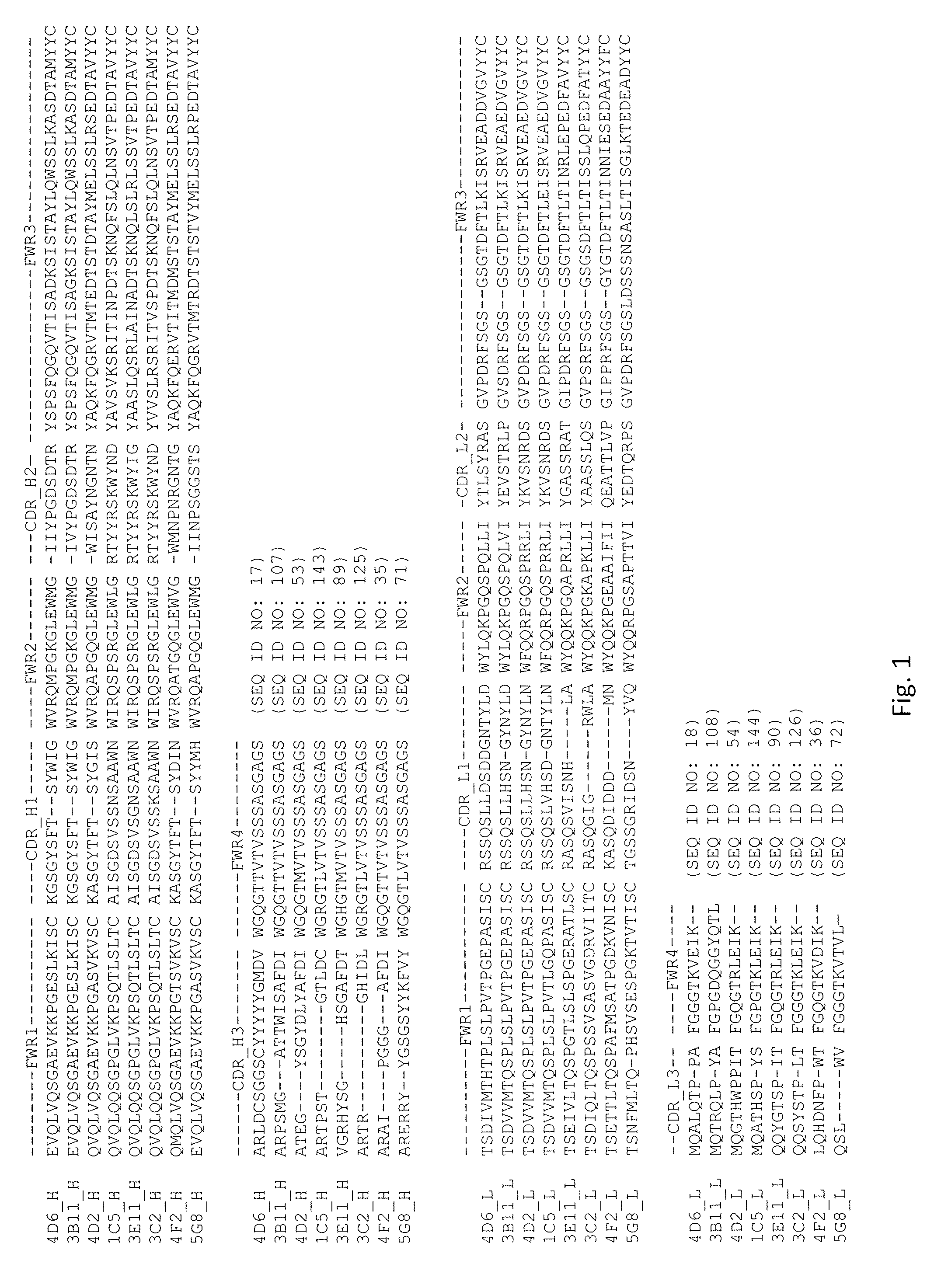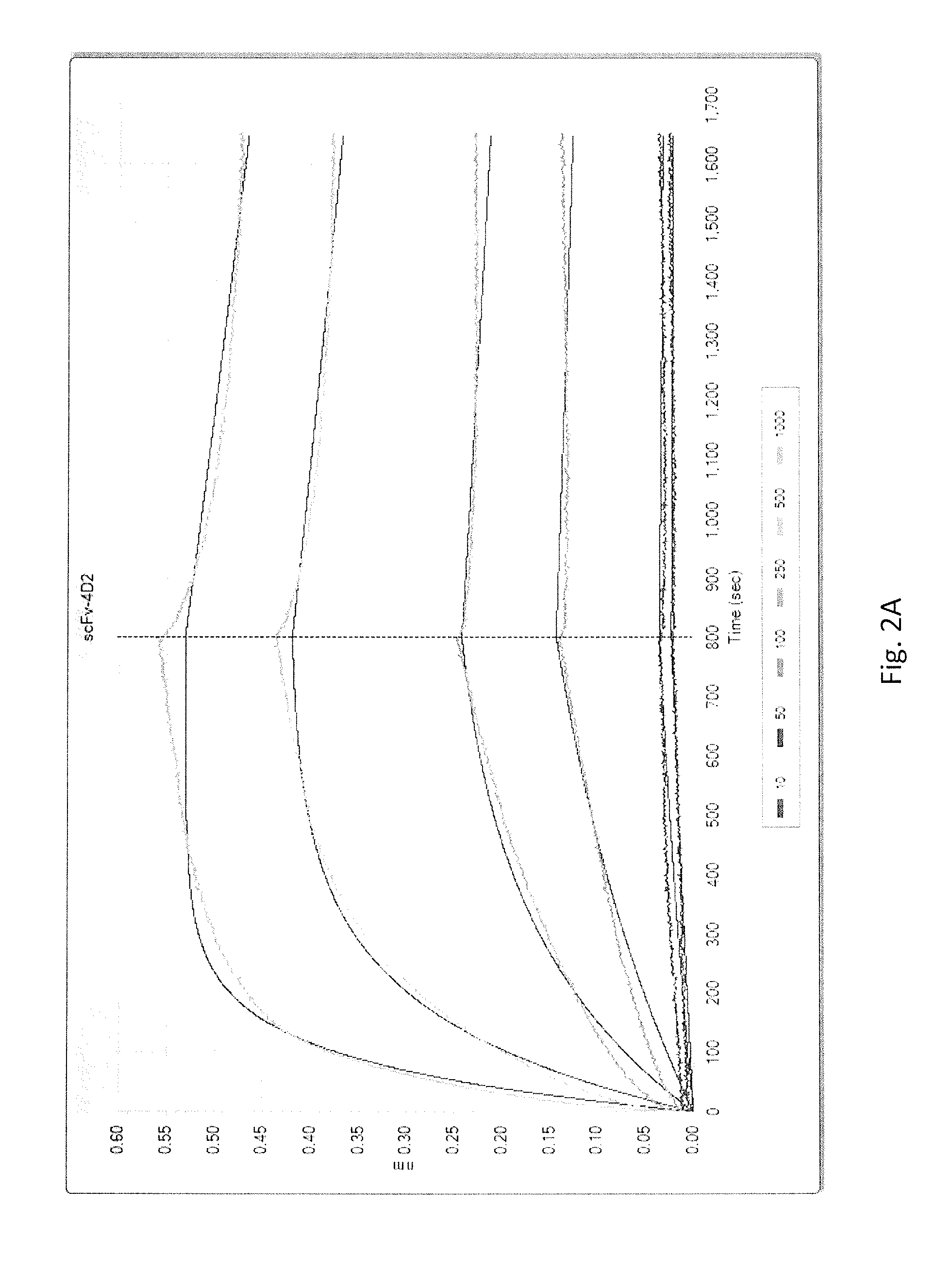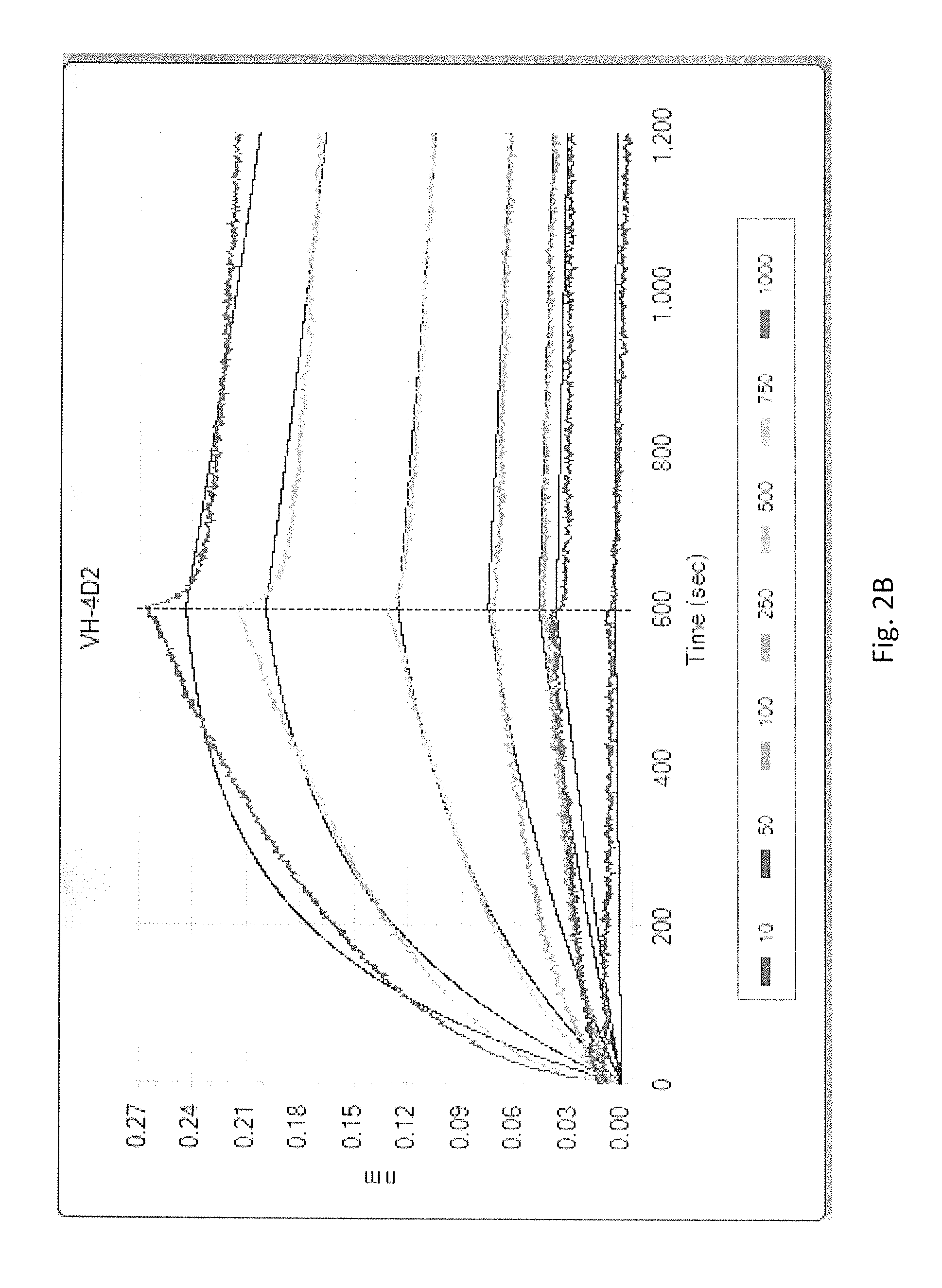Antibodies that specifically bind to serum albumin without interfering with albumin's capability to interact with the fcrn
an antibody and serum technology, applied in the field of immunology, can solve the problems of a relatively short half-life in blood circulation, impede the use of biologic molecules, including engineered antibodies and cytokines as chemotherapeutic agents, and achieve the effect of increasing the pharmacokinetics of antibodies
- Summary
- Abstract
- Description
- Claims
- Application Information
AI Technical Summary
Benefits of technology
Problems solved by technology
Method used
Image
Examples
example 1
Panning and Selection of HSA-Binding scFv Antibodies
[0060]An scFv phagemid library (Yuan, et al. (2008) Caner Immunol. Immunother. 57:367-378) was expressed and used to select antibodies specific for human serum albumin. Soluble HSA at 100 μg / ml concentration in BupH Carbonate-Bicarbonate buffer was coated onto immunotubes overnight at 4° C. The immunotube was rinsed with phosphate buffered saline (PBS) and blocked with 2% gelatin in PBS for 2 hours at room temperature.
[0061]Purified phage (at a diversity of 1010 and titer of 1013 cfu / ml) were mixed with 1 ml of 1% gelatin-PBS and added to the blocked immunotube. The mixture was incubated in the immunotube for 1.5 hours (rotation for 30 min and stationary for 90 min) at room temperature. Unbound phage particles were discarded followed by washing the immunotube 5 times with PBST (PBS containing 0.1% v / v Tween 20), then 5 times with PBS. Bound phage particles were eluted with 1 ml of freshly prepared 100 mM TEA by rotating the immunot...
example 2
Specificity of Antibodies for HSA by a Phage ELISA
[0065]To determine the specificity of antibodies for HSA, a phage ELISA was performed against soluble HSA and control proteins. Individual E. coli colonies from round 3 of selection were picked into 96-well plates containing 200 μl of 2× YTCG medium per well. The plates were incubated overnight at 30° C. in a shaker and they served as Master Plates for Phage ELISA. A 5 μl of inoculum from Master Plates was transferred to Working Plates containing 180 μl of fresh 2× YTCG medium per well and incubated in a shaker at 30° C. for 1.5 hours. A 50 μl volume of Hyperphage (at 1012 cfu / ml) was diluted in 15 ml of fresh 2× YT media and 15 μl per well was used to infect exponentially growing E. coli TG1 cells. The plates were incubated for additional 1.5 hours (30 min stationary and 60 min shaking) at 30° C. followed by centrifugation at 1200 rpm for 20 min and the supernatant was carefully discarded. Fresh 2× YTCGI was added (200 μl per well) ...
example 3
Identification of Antibody Clones
[0067]The clones that were identified to be positive for specific binding to HSA by Phage ELISA were sequenced with LW 111 (5′-CAGGAAACAGCTATGAC-3′) (SEQ ID NO:160) that reads the VH region of the scFv. The aligned antibody sequences are shown in FIG. 1. Sequencing analysis revealed eight unique clones of scFv antibodies against HSA. Further comparison of antibody sequences with the germline sequences in IMGT database showed that the VH regions corresponding to scFvs 1C5, 3C2 and 3E11 were derived from gene IGHV6-1, the VH regions that corresponded to scFvs 3B11 and 4D6 were derived from gene IGHV5-51 while the VH regions corresponding to scFv 5G8 was derived from IGHV1-46, 4D2 from gene IGHV1-18 and 4F2 from gene IGHV1-8.
PUM
| Property | Measurement | Unit |
|---|---|---|
| dissociation constant | aaaaa | aaaaa |
| dissociation constant | aaaaa | aaaaa |
| dissociation constant | aaaaa | aaaaa |
Abstract
Description
Claims
Application Information
 Login to View More
Login to View More - R&D
- Intellectual Property
- Life Sciences
- Materials
- Tech Scout
- Unparalleled Data Quality
- Higher Quality Content
- 60% Fewer Hallucinations
Browse by: Latest US Patents, China's latest patents, Technical Efficacy Thesaurus, Application Domain, Technology Topic, Popular Technical Reports.
© 2025 PatSnap. All rights reserved.Legal|Privacy policy|Modern Slavery Act Transparency Statement|Sitemap|About US| Contact US: help@patsnap.com



